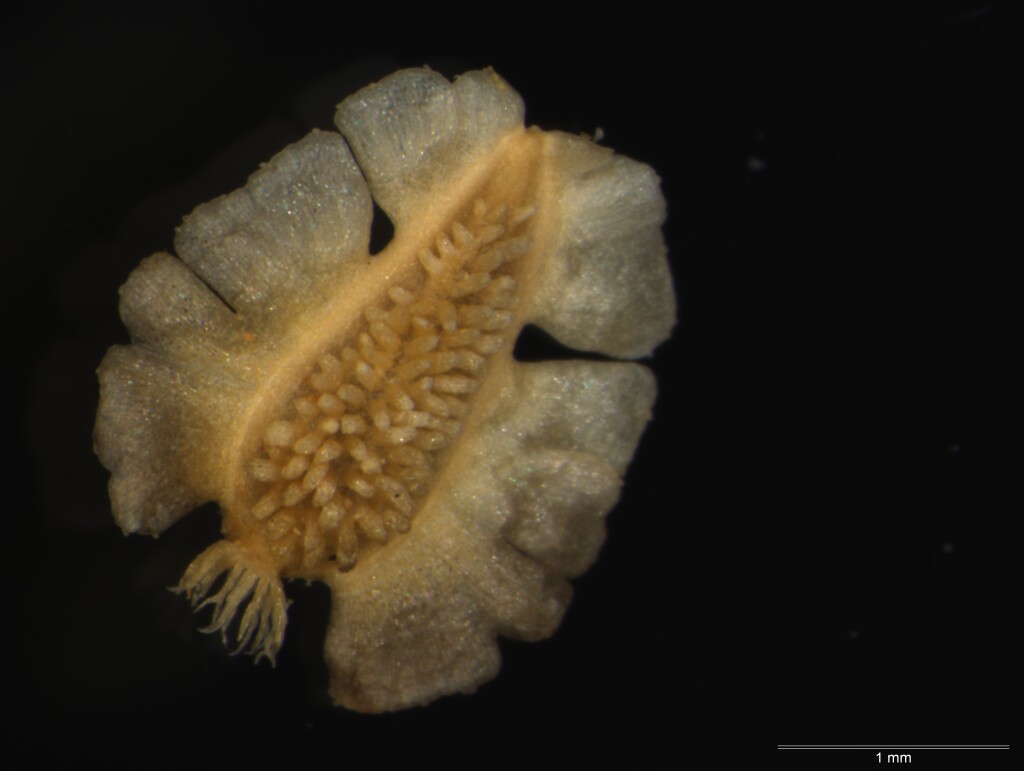Brachyscome dentata
Gaudich. Lobe-seed DaisyErect perennial, 15–45 cm high, with scattered to conspicuous cottony, eglandular hairs, particularly at the base of the plant and immediately below the involucre. Leaves basal and cauline, c. linear or narrowly obovate, 2–8 cm long, 1–5(–10) mm wide, entire or often with the upper section 3(–several)-lobed, glabrous or with scattered cottony hairs. Bracts 13–30, c. 1-seriate, c. equal, mainly obovate or elliptic, 2.6–5.3 mm long, 1–2.5 mm wide, mainly green but with scarious, often purplish margins, glabrous or hairy; ligules 6.4–11.8 mm long, yellow, maturing white (rarely pale mauve). Cypselas very widely obovate to obovate, 2.4–4.6 mm long, 1.6–2.8 mm wide, light brown; lateral faces with c. 30 short but conspicuous tubercles which may terminate in a hair; wing-like margins inflated, broadly dissected, hairy; pappus 0.5–1.2 mm long, bristles joined at base Flowers most of year.
LoM, MuM, Wim, VVP, VRiv, MSB, RobP, MuF, GipP, OtP, Gold, CVU, DunT, NIS. Also SA, Qld, NSW, ACT. Growing as far south as Geelong, as far east as Barnawartha, and extending west to the Wimmera and north-west into the Sunset Country and beyond. Occurs in a diversity of habitats, e.g. in Themeda-Rytidosperma grasslands on basalt in the south, in mallee woodlands on sandy loam in the north-west, and in Yellow Gum associations on heavy clay near Dimboola in the west.
A somewhat polymorphic species, with Victorian populations all hexaploid.
Short, P.S. (1999). Brachyscome. In: Walsh, N.G.; Entwisle, T.J., Flora of Victoria Vol. 4, Cornaceae to Asteraceae, pp. 835–859. Inkata Press, Melbourne.
 Spinning
Spinning

